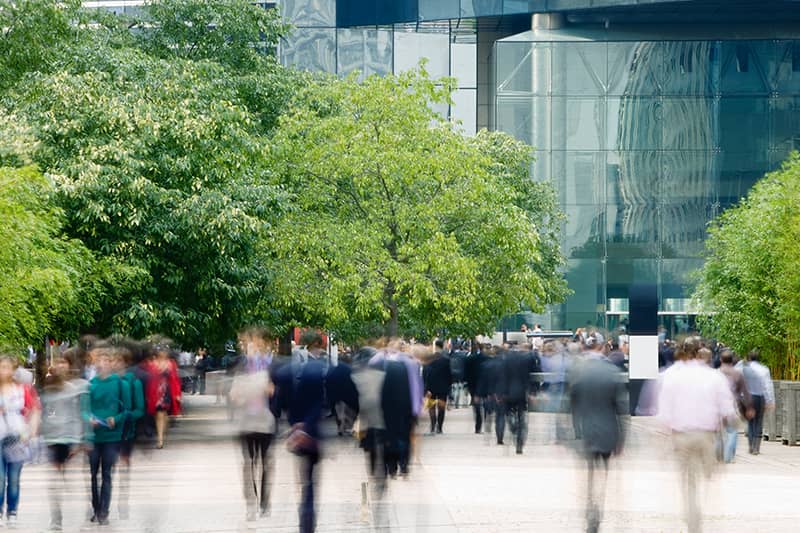The purpose of the Regional Bicycle & Pedestrian Advisory Committee, a subcommittee of the Roanoke Valley Transportation Planning Organization Transportation Technical Committee, is to facilitate regional collaboration with diverse stakeholders in planning bicycle and pedestrian infrastructure in the Roanoke Valley. The Regional Bicycle & Pedestrian Advisory Committee, formerly known as the Bicycle Advisory Committee, was established in 2008 following a recommendation from a Bicycle Friendly Community workshop hosted by the League of American Bicyclists in Roanoke.
The Regional Bicycle & Pedestrian Advisory Committee
Regional Collaboration for Bike-Ped Infrastructure
History
The Regional Bicycle and Pedestrian Committee, under the Roanoke Valley-Alleghany Regional Commission, has played a significant role in promoting and improving bicycling and pedestrian infrastructure in the Roanoke Valley. The origins of bicycle planning in the area date back over 40 years, with the first Bikeway Plan adopted in 1975. This committee has evolved through various updates and efforts, notably influenced by the Greenway Commission established in 1995. Key turning points include the League of American Bicyclists’ visit in 2008, leading to the formation of the Regional Bicycle Advisory Committee and Roanoke’s achievement of Bicycle Friendly Community status in 2010, 2012, and 2016.
The committee, comprised of diverse representatives from local governments, organizations, and citizen advocates, has been instrumental in guiding bicycle-related discussions, informing regional transportation planning, and assisting in various bicycle initiatives. Prominent figures like local attorney David Harrison, City of Roanoke’s Mark Jamison, and Roanoke County’s David Holladay, among others, have been pivotal in advancing the region’s bike/ped infrastructure.
In 2016, the committee underwent restructuring due to declining participation and staff changes, leading to its current formation as the Regional Bicycle & Pedestrian Committee in 2020. Its efforts have significantly contributed to the implementation of bike lanes, routes, and sharrows across the Roanoke Valley, fostering a collaborative environment for enhancing bicycling and walking facilities in the region.
How To Be An Advocate
Our locality staff must weigh the needs and desires of all citizens. They want to provide better accommodations for bicyclists and pedestrians, but they know that taking away travel lanes or parking from cars and trucks can generate backlash. When citizens and elected officials ask for pedestrian and bicycle infrastructure or programs, they give locality staff the confidence to provide what they know is needed.
Ken McLeod shared remarks to City Council he gave at a Roanoke City Council meeting. (This is provided for educational purposes; RVARC does not endorse nor oppose the views in these remarks.)
Check locality websites for procedures to speak at council or board meetings.
Members of the public may sign up to speak at an RVARC Board or RVTPO Policy Board meeting for up to three minutes by emailing [email protected]. Meeting schedules and agendas are available here.
Bike Ped Activities
The Regional Bicycle and Pedestrian Committee supports local governments in bike/ped planning in a variety of ways. An example of committee work is on-road bike/walk/disability site visits of neighborhood connections to greenways identified in the Greenway Plan and other locations requested by localities.
As bike/ped count technology has progressed, committee members have assisted in manual bike/ped traffic counts as part of the National Bicycle & Pedestrian Documentation Project, calibrated automated counters, and help download/upload data from counters that don’t transmit data to the cloud.
Committee field trips have included the Planners and Engineers Ride and the Engineer-guided tour of the Garden City Greenway.
Repaving Schedules
Repaving is great opportunity to make changes to lane configuration that can have a powerful positive effect on pedestrian and bicyclist safety and comfort. Bike lanes that are part of repaving projects are 40% the cost as bike lanes implemented alone. It’s not just bike lanes either. This is a good time to add crosswalks and make other adjustments that make it easier and safer for bicyclists and pedestrians to cross the street or travel along the street.
Citizens can help by knowing what’s on the paving schedule, comparing it to bicycle and pedestrian plans, and let elected officials and locality or VDOT staff know that they support this opportunity to implement the plans.
The paving schedule for Roanoke City is on the City Transportation website.

Meetings
Regional Bicycle & Pedestrian Committee meetings are either online or at the Roanoke Valley-Alleghany Regional Commission, 313 Luck Ave SW.